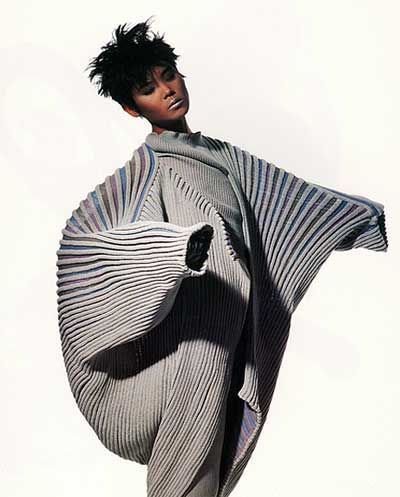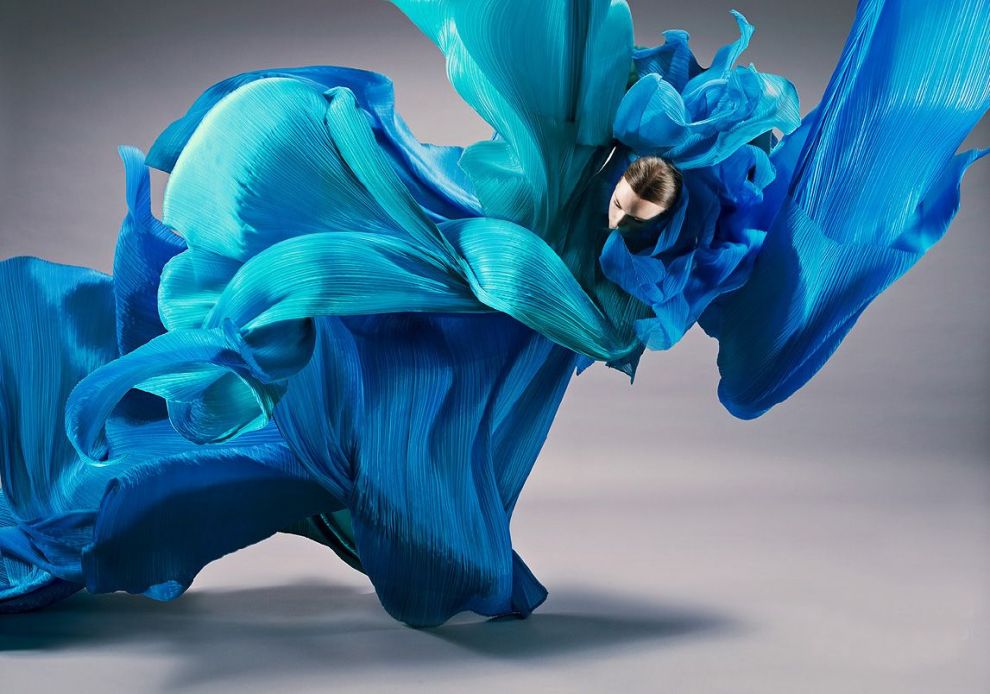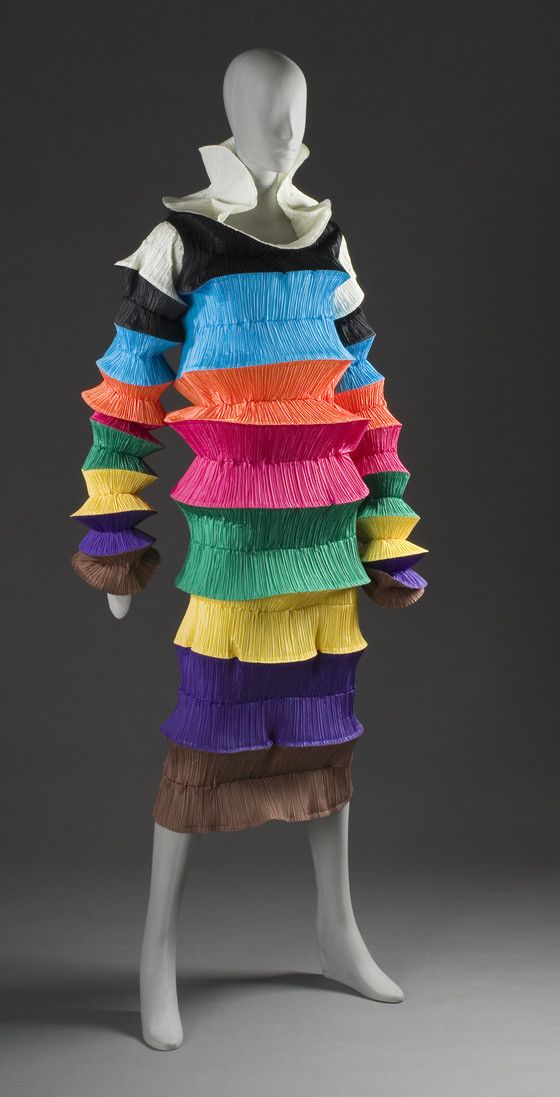Bezalel News
חדשות בצלאל
أخبار بتسلئيل
Issey Miyake
Issey Miyake, one of Japan’s cultural heroes, passed away lately and there’s no doubt that his creativity will be missed in the fashion world.
Born in Hiroshima in 1938, at the age of seven he survived the nuclear attack, but remained with a slight limp. His mother died as a result of the radiation. After finishing high school, he moved to Tokyo and studied graphic design, but his love for fashion led him to Paris. There, he became an apprentice at Guy Laroche's fashion house and from there he moved on to work for Givenchy. After witnessing the student demonstrations of 1968, Miyake decided to leave fashion design which only aimed to dress the wealthy elite, and in 1970 he opened his own fashion house. By 1973 he was ready to present his own collection at the Paris Fashion Week.
To leave an impression on Paris, the capital of fashion of the 70’s, one had to create an innovative visual language, and that’s exactly what Miyake did. Unlike Parisian designers of the time who were aiming for perfect cuts that trace the body’s silhouette, Miyake’s clothes disregarded the body and focused rather on the space around it. He created objects that appeared as soft sculptures that were worn on the body. Miyake treated the garment as an object of art and not as a fashion product. His creative process was more like that of an abstract artist than a figurative one: he did not focus on the body in front of him, but disassembled it into elements, addressing only those that interested him, while incorporating traditional Japanese techniques of origami and kimono design.
An additional element of his work was asymmetrical fashion that takes the body apart rather than putting it into symmetrical braces. The fashion changes in Paris in those years focused on the fabric variations and the change in the hem line which, despite the alterations, was always designed parallel to the ground. Miyake released the hemline, letting it drop with gravity as part of the soft sculpturing approach. But probably the most significant aspect of his work was the role he gave randomality. Seams were often placed where they don’t fit the body, and their final position was determined by a Japanese pattern method that leaves room for coincidence. Later, Issei Miyake, who put great emphasis on technological innovation, also created different fabrics to suit his unique work process.
With such a different perception of the language of fashion, Issei Miyake soon became a star worldwide fashion design. Later he also became part of the holy trinity of the Japanese fashion world, alongside Rei Kawakubo (from Comme des Garçons) and Yohji Yamamoto. But while Kawakubo and Yamamoto, who led the Deconstruction Fashion Movement, are grim, intellectual and love to design in black, Issei Miyake always liked the happy, shiny colors and cuts with a light, flat graphic appearance (presumably due to his training as a graphic designer).
Although Kawakubo and Yamamoto had an immense impact on the European fashion world, (mainly with the color black and the development of the Deconstruction Fashion Movement), it was Miyake who paved the way for Japanese designers with his presentation in Paris, eight years earlier than them, which changed the classic French designers' perception of the body.
In 1993 he launched his line ‘Pleats Please’ as a response to the price of high fashion. The interesting fabric of the collection was made in India, especially for him. The garments were made of pleated polyester cloth and had a flexible cut that looked different on every body.
But probably his most famous garment was the black golf shirt he made for Steve Jobs, who asked him to design uniforms for Apple employees, after seeing that Japanese Sony employees all wore the company's uniform. The project was never executed due to protesting Apple workers, who did not want to wear uniforms as in Japanese companies. But Jobs himself only wore this shirt which would become the unofficial uniform of Silicon Valley.
It’s difficult to describe Miyake's clothes in terms of the fashion world alone. He exhibited worldwide, his shows were created as installations or dance performances and his fashion photographs were often taken by famous photographic artists. Many of his designs are exhibited in museums today, including the MOMA's permanent collection.
Prof. Ory Bartal
Lecturer in the Department of Visual and Material Culture.







